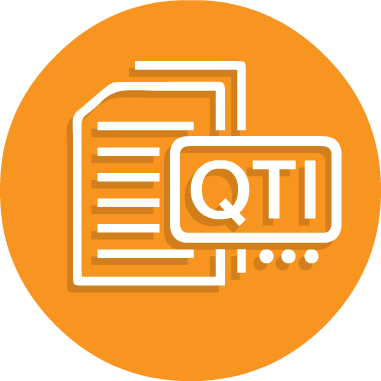Excelsoft engages in different types of multimedia presentations:

Animation

Whiteboards

Illustrations and Graphic Designs

2D / 3D Objects

Interactive Learning Elements

Video Production
Expertise to develop scripts, storyboards, participant workbooks, facilitator guides, interactive PDFs, learning games, classroom presentations, and use of e-learning solutions impactfully.
Authoring Tools-based Learning

We use different e-learning authoring tools to create content, course materials, workflows for learning platforms, etc. It reduces the development time and guarantees higher ROI (return on investment) on learning content development solutions.
Instructor-led Training (ILT)
Excelsoft Technologies expertise in creating and designing ILT toolkits and equipping the facilitators and instructors with the suitable set of teaching tools like:


Rubrics

vlabs

Activity Workbooks

Student and Teacher’s Manuals

Online and offline Teaching aids

Discussion Forums

Assessment Matrix
Whether simple animation or a long sequence with layered animation and complex interactivity, our multimedia services team capably and effortlessly creates different presentation elements such as graphics, videos, animations, texts, music, and voice narration to bring life to the custom e-learning solutions.
Animation

We can categorize our animation and multimedia presentations into five types overall.
The fundamental philosophy is to appropriately blend creative and technological elements into the learning components to achieve optimal results for custom e-learning solutions.

3D/2D Animation

Cell Animation

Character Animation

Motion Graphics

Whiteboard Presentations
Whiteboards
The whiteboarding style or presentation is a great way to improve knowledge, add power to retention and adaptability, and creatively use instructional design in education.
Our scriptwriters, video creators, and animators work together to sketch even the micro-details of your e-learning and development goals.

Interactive Learning Elements
Our interactive elements/events range from a bloc of content to designing a graphic, an assessment, a presentation style, or an interactive feedback format. We follow meta-analysis and STEM approaches to create practical learning elements and to make virtual training effective.

Learning (Games)

Theme/Rule-based
(Gamification)

Item (Sorting)

Branching and Conditional
(Navigation)

Fill-in-blanks/Writing
Answers

Hotspots

Pre-and-Post
(Assessment Tests)

Element (Click)

Custom (Feedback)
2D/3D Objects
While 2D models are useful when you want a simple view of only specific types of measurements, 3D models are valuable because they can include a much wider array of project information. Our 2D/3D Learning Objects are low-cost, developed in quick time, customizable, easy to embed, and par with recent technological advances.

Video Production

Leveraging our instructional design capability, we create a range of customized learning videos to engage your target audience and fulfill your business objectives in a timely, cost-effective manner. These engaging yet informative video products combine our creative and storytelling abilities to explain/present a concept in a visual or animated, or theatrical format.
Contact our very own video strategist to help you get the perfect video for your goals.

Explainer Videos

Simulation

Whiteboard

2D/3D Video

Motion/Character Animation

Line Illustrations

Promotional

Theatrical Video with Real Actors
Successful e-learning applications require much more than pretty pages with information on them. They must be extremely easy to navigate, have clear instructions, and be compatible with all browsers, operating systems, and most mobile devices.
Our testing services go beyond simple, functional, and usability tests. It considers the characteristics of the learners themselves, the instructional design of the individual courses, the learnability of the course structure, and the engagement of the CMS (Content Management System) itself. With Excelsoft, you can develop a flawless application that will elevate your business and put you above the competition.
We follow various evaluation and compliance norms/fundamentals while testing the digitized content.

Unit and Functionality Test

508 Compliance

xAPI, AICC, and cmi5 Compliance

QTI and more
508 Compliance
Section 508 is part of the Rehabilitation Act of 1973. We understand that accessibility is many-layered. The electronically and digitally hosted courses comply with the 508 Accessibility Compliance Framework allows users with disabilities equal training experience when enrolled in a course.

- Perceivable: all content, information, and interactivities must be presented in a way that users can easily perceive, including users with vision, hearing, or cognitive disabilities
- Operable: all navigation and interfaces must be operable for users of all abilities, including those who rely on keyboard-only navigation or assistive technology
- Understandable: the content and design should be presented in ways that are readable and understandable for users of all abilities
- Robust/Modular: all the pieces of the content are adaptable, modular, accessible over any devices/platforms, and support assistive technology
xAPI, AICC, and cmi5 Compliance
We are currently exploring and working to make our products xAPI, AICC, and cmi5 Compliant.


